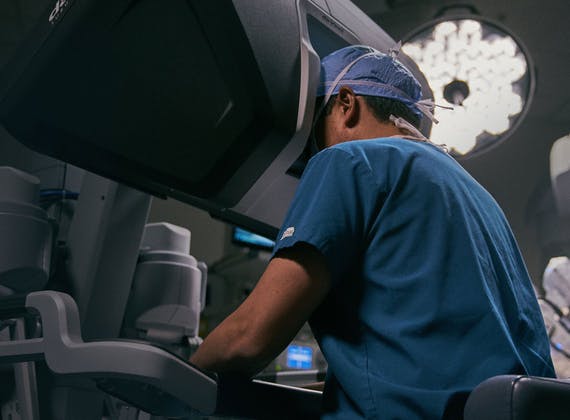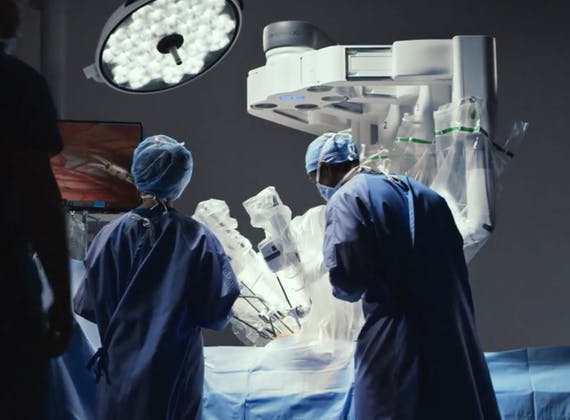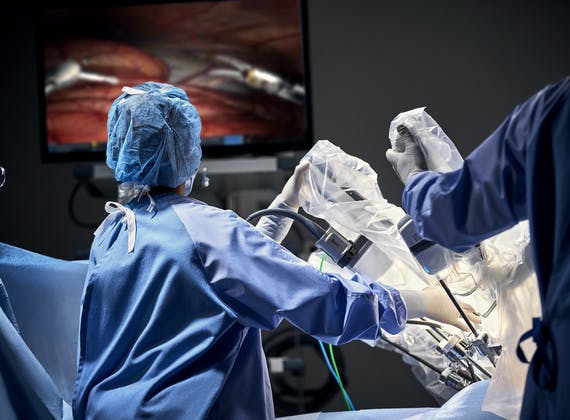Both minimally invasive surgical options require one or a few small incisions that doctors use to insert surgical equipment and a camera for viewing. In laparoscopic surgery, doctors use special long-handled tools to perform surgery while viewing magnified images from the laparoscope (camera) on a video screen.
What is a da Vinci surgical system?
The da Vinci is a surgical system comprised of three components: surgeon console, patient-side cart, and vision cart.

Surgeon Console
The surgeon console is where your surgeon sits during the procedure, has a crystal-clear 3DHD view of your anatomy, and controls the instruments. The tiny instruments are “wristed” and move like a human hand, but with a far greater range of motion.

Patient Cart
The patient-side cart is positioned near the patient on the operating table. It is where the instruments used during the operation move in real time in response to your surgeon’s hand movements at the surgeon console.

Vision Cart
The vision cart makes communication between the components of the system possible and provides a screen for the care team to view the operation.
It’s important to remember that Intuitive does not provide medical advice. After discussing all options with your doctor, only you and your doctor can determine whether surgery with da Vinci technology is appropriate for your situation. You should always ask your surgeon about his or her training, experience, and patient outcomes.
Robotic-assisted urologic procedures
- Prostatectomy (prostate surgery)
- Partial and Total Nephrectomy (kidney surgery)
- Pyeloplasty (surgery to relieve kidney blockage)
- Cyst Removal (surgery to remove cyst from kidney)
- Cystectomy (bladder surgery)
- Ureteral Implantation (fix the tubes that connect the bladder to the kidneys)
Talk with your doctor if you have any additional questions about these procedures.
Disclosures and Important Safety Information
Important Safety Information
Patients should talk to their doctors to decide if da Vinci® surgery is right for them. Patients and doctors should review all available information on non-surgical and surgical options and associated risks in order to make an informed decision.
Serious complications may occur in any surgery, including da Vinci surgery, up to and including death. Serious risks include, but are not limited to, injury to tissues and organs and conversion to other surgical techniques, which could result in a longer operative time and/or increased complications. For Important Safety Information, including surgical risks, indications, and considerations and contraindications for use, please also refer to www.intuitive.com/safety.
Individuals’ outcomes may depend on a number of factors, including but not limited to patient characteristics, disease characteristics, and/or surgeon experience.
da Vinci Xi® System Precaution Statement
The demonstration of safety and effectiveness for the specific procedure(s) discussed in this material was based on evaluation of the device as a surgical tool and did not include evaluation of outcomes related to the treatment of cancer (overall survival, disease-free survival, local recurrence) or treatment of the patient’s underlying disease/condition. Device usage in all surgical procedures should be guided by the clinical judgment of an adequately trained surgeon.


